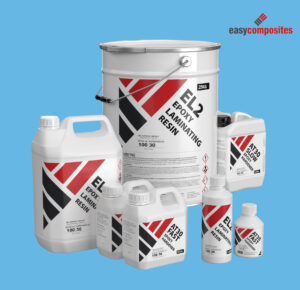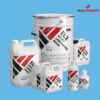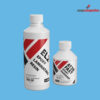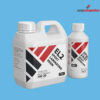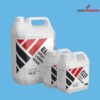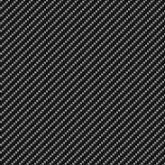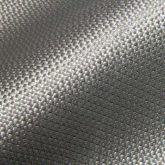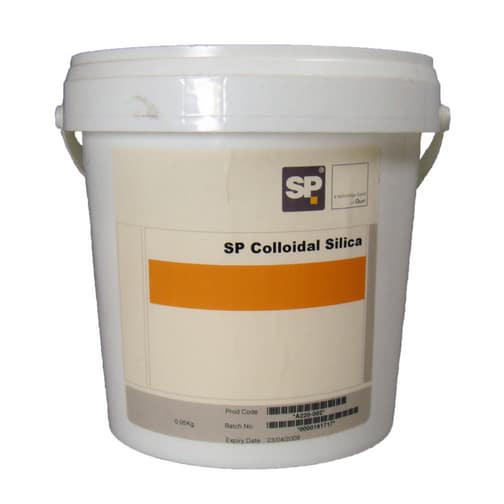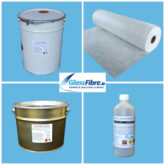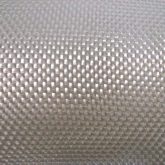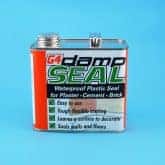Description
High performance general purpose epoxy laminating resin for use in wet-lay or vacuum bagging carbon fibre, Kevlar or glass fibre lamination.
This low viscosity epoxy exhibits excellent wetting characteristics especially when used as an epoxy resin for carbon fibre and aramid fibre (Kevlar) reinforcement making air-bubbles in the laminate less likely than with some alternative epoxy systems.
The resin also exhibits excellent cured mechanical properies far in excess of many more traditional epoxy resin brands (as can be seen from the technical data sheets). Improved mechanical properties mean stronger, lighter, higher performance parts.
In all sizes the epoxy is sold as a pack which means it includes the resin and the correct amount of hardener.
Typical Uses
Use as a general purpose laminating layup epoxy resin for wet-laying or vacuum bagging composites such as glass fibre, carbon fibre and aramid fibre (Kevlar).
When cured the epoxy exhibits outstanding mechanical characteristics making it will suited to the lamination of structural parts. The resin also exhibits excellent clarity making it also suitable for use when laminating unpainted (or pigmented) carbon fibre composites.
Compatibility Information – Dos and Don’ts
Although by no means an exhaustive list, the mould materials, pigments and additives listed below have all been tested and are known to work well with EL2.
- Compatible Moulds
- Uni-Mould Mould System
- Epoxy Tooling Gelcoat
- Epoxy gelcoat based moulds
- Polypropylene and polyethylene sheet
- Aluminium
- Toughened Glass (eg. flat sheet manufacture)
- Compatible Pigments
- Epoxy Colour Pigment * (for vivid opaque colours)
- Translucent Tinting Pigment * (for less vivid opaque colours)
- Compatible Fillers
- All dry filler powders
* With bold coloured laminates such as carbon fibre, the underlying colour of the fabric may still show through the pigmented resin, especially with thinner layers of resin over the underlying laminate.
Key Processing Information
- Ease of Use
- Suitable for professional and hobby use (follow SDS advice).
- Odour
- EL2 is almost odourless.
- Safety Precautions
- Wear gloves and goggles and work in a well ventilated area. Always read the SDS before use.
- Ambient Conditions
- Can be used from 15 to 30°C although pot-life and cure time will be affected significantly. Recommended working at an ambient of 20-25°C.
- Degassing
- Not necessary in most cases. Simply mix and use.
- Mix Ratio
- Mix ‘Resin’ and ‘AT30 Hardener’ 100:30 by weight. Use digital scales.
- Mixing
- Mix thoroughly by hand for at around 2 minutes.
- Pot-Life
- FAST Hardener 12-17mins. SLOW Hardener 95-115mins. Be sure to use your resin before this time.
- Exotherm (Over-Heating)
- Resin will heat-up whilst it cures. Mix in small batches and use expediently. Mixed resin in a pot will quickly overheat (exotherm) and can smoke/ignite. Never leave mixed resin unattended.
- Cure Time/Demould
- At 25°C you can expect a typical cure time to be 4-6hrs for the FAST & 20-30hrs for SLOW AT30 hardeners.
- Pigments and Fillers
- A wide range of pigments and fillers can be added to change the properties and appearance of Resin.
EL2 Epoxy Resin Hazard Statement
Danger
H314 Causes severe skin burns and eye damage.
H317 May cause an allergic skin reaction.
H360 May damage fertility or the unborn child.
H411 Toxic to aquatic life with long lasting effects.
(Refer to Safety Data Sheet under ‘Data Sheets’ tab)




EL2 Epoxy Hardener Hazard Statement
Danger
H302 Harmful if swallowed
H314 Causes severe skin burns and eye damage.
H317 May cause an allergic skin reaction.
H412 Harmful to aquatic life with long lasting effects.
(Refer to Safety Data Sheet under ‘Data Sheets’ tab)



